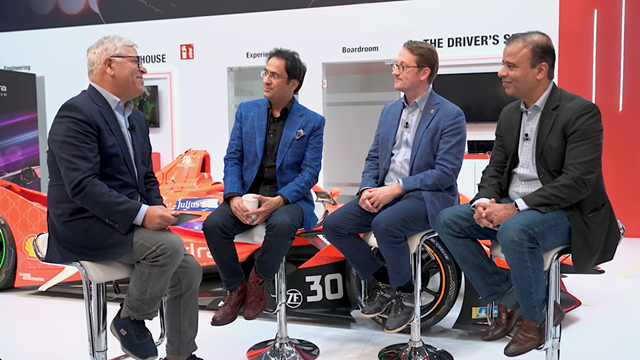
- Mobility report discovers heightened stress in mobile video delay
- Like standing on the edge of a virtual cliff says report
- One billion LTE subscirptions worldwide
Ericsson has launched the MWC edition of its Mobility Report in which it focusses on the evils of streaming delay. We knew those video glitches were annoying but Ericsson has discovered that they’re mentally taxing too - taxing enough to cause a measurable increase in a user’s stress levels.
The report says that six-second delays to video streaming caused stress levels to increase by a third. “To put that in context, the stress incurred is equivalent to the anxiety of taking a math test or watching a horror movie alone, and greater than the stress experienced by standing at the edge of a virtual cliff. Once a video begins, an additional pause can cause stress levels to increase dramatically.”
Hell’s teeth! Perhaps we should only watch movies on a smartphone with trained medical staff in close support, adrenalin shots at the ready.
If an operator manages to get on top of the video stutter/stress problem, however, Ericsson reports that the happy user experience triggers “a positive emotional response and increases brand engagement”.
I don’t know though. I think users - quite rightly - just expect the data service, which they’re paying through the nose for, to simply deliver smooth video and respond properly to requests. If it does they are satisfied, if it doesn’t they’re annoyed. No extra engagement points for just managing to do what the service promised in the first place.
But in these matters the report highlights a perennial problem with cellular networks - app response time. This I’ve seen mentioned over and over in the past few months as an area operators must address. Part of the problem, no doubt, is related to their insistence on backhauling data to the evolved packet core (EPC) where it can be counted, massaged and charged for. That’s the business model. But users reverting to WiFi (when possible) isn’t just a means of staying under cap. For most the home and office users, WiFi gives better, faster and snappier performance than the cellular alternative. Users do notice these things, and the disparity will be keener as WiFi gets a boost from its new 5GHz incarnations yoked to faster fixed access - both copper and fibre.
Yes, yes, I know. 5G will reset this playing field. But even if the timescales don’t slip (which they will) super-speedy 5G is years away and so far, as the US experience shows, 4G (which was supposed to sweep all before it) hasn’t done the trick.
Social Networking traffic to soar
Well, yes again. Any surprises there? The report says that social networking traffic over the next six years will be 12 times that of the last six, which sounds pretty-much like the Moore’s Law demand curve the industry has been proving out for the past 40 years or so.
Further data points include:
- 68 million mobile subscriptions added in Q4 2015, India added the most (21 million), followed by China (6 million), the US (5 million), Myanmar (5 million) and Nigeria (3 million)
- Total number of mobile subscriptions in Q4 2015 reached 100 percent penetration at around 7.3 billion - the same number of mobile subscriptions as people in the world
- Global mobile data traffic grew 65 percent between Q4 2014 and Q4 2015
- There are now one billion LTE subscriptions worldwide, with approximately 160 million additions in Q4 2015.
Email Newsletters
Sign up to receive TelecomTV's top news and videos, plus exclusive subscriber-only content direct to your inbox.




